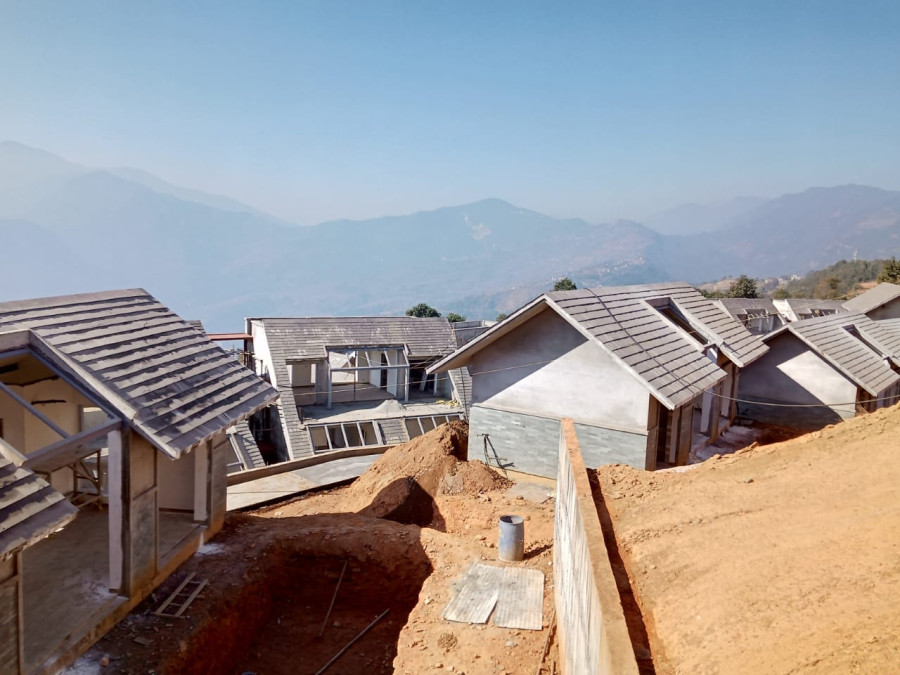Money
Foreign investment pledges fall 12.7 percent as India’s commitment slumps
Of the commitments worth Rs26 billion made so far this fiscal year, more than 70 percent is from China. Most of the investment is in the tourism sector.
Krishana Prasain
Foreign direct investment pledges in Nepal dropped by double-digit, falling 12.68 percent year-on-year in the first nine months of the current fiscal year, largely because commitment from Nepal’s immediate neighbour India slumped.
While investment commitment from China topped the list of foreign investment source countries, increasing slightly compared to the same period last fiscal year, the year-on-year investment from India dropped by a whopping 81 percent.
Nepali officials said that investors around the world are still in a “wait and watch” mode due to the second and third waves of the Covid-19 pandemic. In addition, unfolding political uncertainty in the country has complicated things, they said.
According to the Department of Industry, the country received foreign direct investment pledges of Rs26.04 billion in the review period (mid-July 2020 to mid-April 2020). This investment has been pledged for 140 different projects and services.
In the same period last fiscal year, Nepal had received investment pledges of Rs29.87 billion.
China leads the investment commitments to Nepal. The country received 107 foreign direct investment (FDI) commitments of Rs18.45 billion from China in the first nine months of the current fiscal year, which amounts to more than 70 percent of the investment commitments.
In the same period last fiscal year, investment pledges from China stood at Rs18.24 billion.
Jiblal Bhusal, director general at the Department of Industry, said that investors from China have been eying investment in sectors like hotel, restaurant and cargo.
Investment pledges from India have dropped significantly. Nepal received investment pledges of Rs586 million from Indian investors for seven different projects and services in the first nine months of the current fiscal year. According to the department, in the first nine months of the last fiscal year, Indian investors' investment commitment to Nepal was Rs3.13 billion.
“As India has been highly impacted from Covid-19 and the second wave of the pandemic has started, the investors are cautious. It seems investment from India will take time to recover or even decline in coming months,” Bhusal said.
The country has received investment pledges of Rs15.56 billion in the tourism sector for 79 different projects, 15 foreign investment pledges of Rs2.44 billion in the manufacturing sector, 34 foreign pledges of Rs5.18 billion in the service sector.
According to a World Bank report published recently, Nepal will observe a slow recovery in the ongoing fiscal year 2020-21 which is expected to boost the economic growth rate to 2.7 percent.
The report, however, has warned that there is a risk that political uncertainty, if prolonged, may undermine investment sentiment.
“Sources of risk to the outlook include possible new waves of Covid-19, as well as increased political uncertainties, following the dissolution of Parliament’s lower house in December 2020 and the Supreme Court’s February 2021 decision to reinstate it,” said the report which included activities till March 25, 2021.
Despite the drop this fiscal year, Bhusal said the government is optimistic that foreign investment commitment would recover to the last fiscal year’s level, based on the inquiries from investors, if Nepal is not impacted by the second wave of coronavirus.
“We have foreign investment proposals worth Rs5-6 billion in the pipeline in different sectors like hydropower, hotels. We still have three months remaining for the current fiscal year to end and there are other inquiries.”
The department received foreign investment pledges of around Rs38 billion in the last fiscal year 2019-20 that ended mid-July 2020.
“We have fast-tracked the projects that are in pipeline and initiated a necessary follow-up for those who are facing documentation hassles,” said Bhusal.
“To make the environment for foreign investors conducive, the government has made some improvement on the policy, regulation and Act.”
The government had issued a new regulation three months ago under the Foreign Investment and Technology Transfer Act (FITTA) to facilitate foreign investment.
The regulation, announced on January 11, has provisioned that foreign investors in Nepal need to bring 70 percent of their proposed investment before beginning operations, and the rest in the next two years.
The FITTA was amended in 2019, and the regulation was introduced to define it with greater clarity.
He said that the government has already introduced a one-window system to facilitate foreign investment. The Investment Board of Nepal is also working on the facilitation measures.
Nepal aims to become a middle-income country and achieve the Sustainable Development Goals by 2030. But the current level of investment is not enough for the country to reach the middle-income stage from the current low-income status as targeted, according to a World Bank.
One of the major sources of bridging the financing gap is foreign direct investment, but Nepal is among the countries attracting the lowest amount of investment in recent years.




 18.12°C Kathmandu
18.12°C Kathmandu















